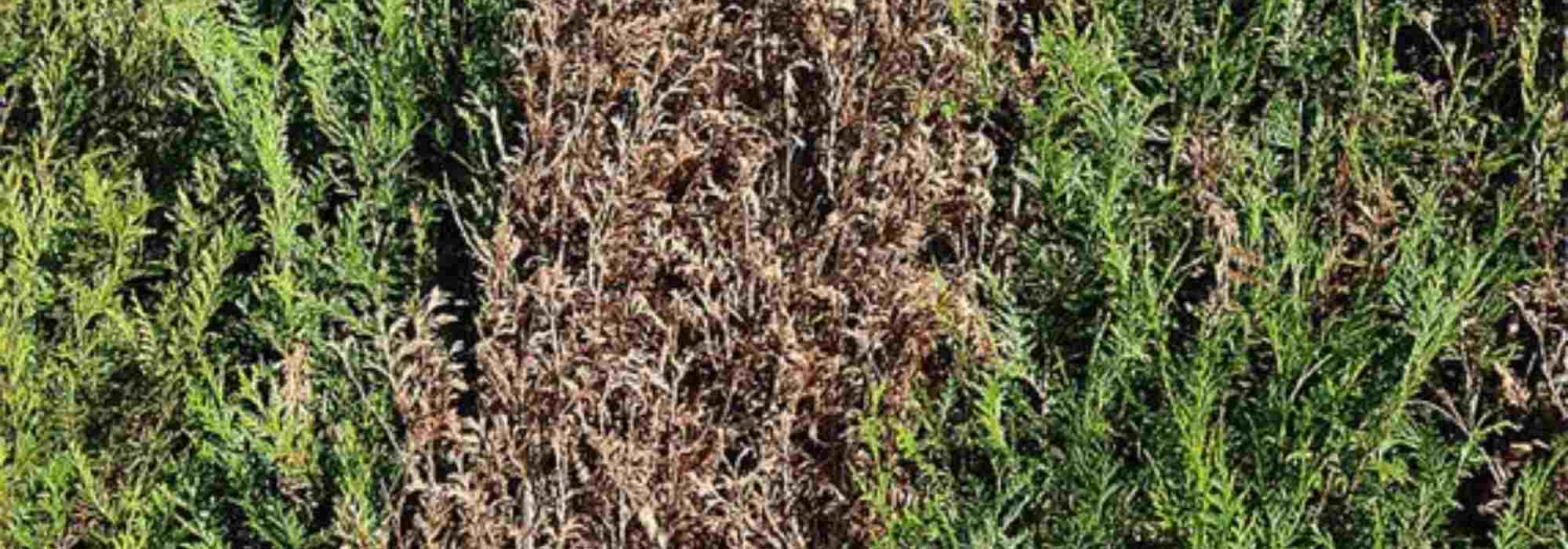
Diseases and parasitic pests of thuja
Main diseases and pests
Contents
Thuja is a hardy conifer, widely planted in hedges for its robustness and rapid shoot growth. However it can suffer from various diseases that make its life difficult such as thuja dieback, cortical canker or attacks by destructive insects like buprestid beetles. All these problems are very often the result of poor growing conditions for thuja: heavy, waterlogged soil, water stress during drought or planting as a single-species hedge… Let’s review the different pests and diseases of thuja in this guide.
Thuja dieback caused by Phytophthora cinnamomi
Symptoms
First, rot spots appear on the collar and roots. Subsequently, foliage browns in places, then along an entire shoot and finally across whole tree. Nothing can be done: Thuja dies.
Cause
The culprit is Phytophthora cinnamomi. It is a unicellular organism belonging to oomycetes, aquatic non-photosynthetic organisms (formerly classed among fungi, hence suffix “mycete“). This oomycete, which lives in plant tissues and in the soil, does not only attack Thuja: it can also affect oaks, chestnuts, Ericaceae (azaleas and rhododendrons) and other conifers such as cypresses, pines or cedars.
→ to learn more about Phytophthora, read : Phytophthora: identify, prevent, control.
Often in dormancy for some time, chlamydospores (spores that do not detach from mycelium) of Phytophthora cinnamomi “wake up” when environment becomes favourable again: in presence of water. These spores germinate and produce mycelium and sporangia. Sporangia mature and release zoospores (flagellate spores capable of moving in water). These can then penetrate roots and produce mycelium in turn. This mycelium consumes carbohydrates and nutrients and blocks passage of sap: infected tree will wither and its root begin to rot.
Decline is more likely when Thuja are stressed, for example during severe drought, or when grown in heavy, clay soil.
Treatment
Preventive: avoid irrigation water contaminated with Phytophthora cinnamomi and avoid using non-disinfected tools. Also avoid heavy, clay soil, excess nitrogen and planting too close together.
Curative: only effective treatment is removal of affected individuals. Replacing soil at tree location can also be considered.
Read also
Major diseases and pests of conifersPathogenous fungi responsible for browning, foliar spots and canker of shoots
Symptoms
Discoloured spots appear on young foliage. Gradually, these spots turn brown then grey. Initially localised on a few shoots, they eventually become increasingly extensive. Scales affected by this browning eventually fall off at the end of summer. On young plants, this browning can lead to death.
Causes
Several stumps of pathogenous fungi can cause browning of thujas and other diseases of varying severity. The stumps most commonly encountered in browning cases are Pestalotiopsis funerea, Kabatina thujae and Coniothyrium fuckelii. The pathogenous fungus Didymascella thujina is responsible for foliar spots of Thuja that resemble browning of the branches. Phomopsis thujae causes, moreover, the canker of the branches (but this is also the case with Coniothyrium fuckelii).
Treatment
In this case too, heavy, waterlogged soil favours browning of thujas, as well as weakening thujas. Make sure to provide well-drained soil for your thujas!
Discover other Thuya - Thuja
View all →Available in 4 sizes
Available in 2 sizes
Available in 3 sizes
Available in 3 sizes
Available in 1 sizes
Available in 3 sizes
Available in 2 sizes
Available in 1 sizes
Available in 2 sizes
Cortical canker
Symptoms
Shoots affected by canker turn from yellow to rusty and eventually dry out. On close inspection, at the base of these shoots, a reddish canker can be seen from which a resinous substance oozes. A canker, in botany, is a necrotic lesion of woody tissues (wood!) resulting from an attack by bacterium or, in our case, a pathogenous fungus.
Causes
A poorly made wound from pruning, insect entry or simply caused by wind… and bam! An open door for Seiridium cardinale (formerly Corydium cardinale), the pathogenous fungus responsible for cortical canker in thuja.
Treatment
Preventive: first of all, ensure you prune or cut your thuja with clean, disinfected tools. Bordeaux mixture could be applied as a preventive measure but copper sulfate contained in this “mixture” is harmful to soil life. Exercise caution!
Curative: if tree is completely affected by canker, best to remove it. Fungicidal treatments will not help.
Read also
Phytophtora : identify, prevent, controlBuprestids and... other insect pests of Thuja
Symptoms
One can observe browning as sudden as it is severe of some shoots. To be certain buprestid larvae are attacking your Thuja, check on and under the bark. Ovate holes in the bark reveal emergence of imagos (adult insects) while galleries beneath the bark clearly show larvae pathways.
Cause
Thuja buprestid, scientific name Lamprodila festiva, is a beetle (family Buprestidae) whose larvae are xylophagous: they eat wood. Female buprestids lay eggs in fissures of the bark on the trunk or branches of Thuja but also on junipers or cypresses.
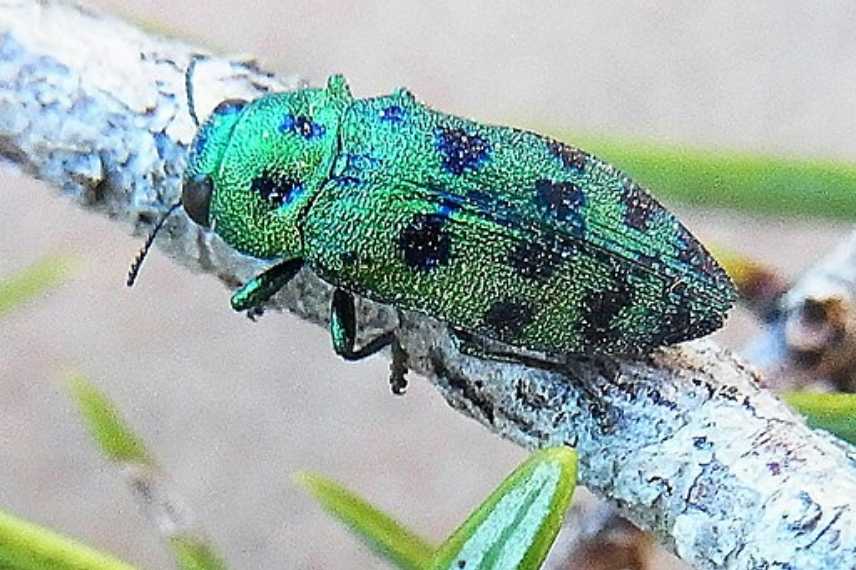
Buprestid
Treatment
Once larvae are inside the wood, no remedy is possible. The only option is removal of affected specimens.
Not always the buprestid…
Buprestids are not the only insects to attack Thuja: other, more occasional pests can become problematic. Such as Thuja leafminers, moths (five different species can attack Thuja) whose caterpillars feed inside leaves before emerging as adults; Thuja bark beetles also cause damage on a par with buprestids; or the Thuja longhorn beetle, which is in any case a rather striking insect.
Red spider mites
Symptoms
Pale or yellowish spots appear on foliage. Foliage eventually yellows then turns grey. Leaves dry out and fall. Fine webbing may be visible on twigs in cases of severe infestations.
Cause
Red spider mites are not actually spiders but mites of the Tetranychidae family. There are many different species — not all red — and they can attack no fewer than 200 different plant species, including thujas. These mites feed on sap and plant tissues. Red spider mites, or tetranychids, attack thujas during hot, dry periods.
Treatment
Prevention: in mid-summer, water thujas at base and over foliage, as red spider mites dislike moisture.
Curative: spraying a garlic oil macerate is effective. Let 100 g fresh garlic macerate in 5 cl vegetable oil for 24 hours. Strain and add to one litre of water with a teaspoon of black soap. Spray this mixture once a week on infested thujas.
Red spider mites also have many natural predators, such as another mite called Phytoseiulus persimilis, sold in garden centres for biological control. They are also eaten by larvae of ladybirds and lacewings.
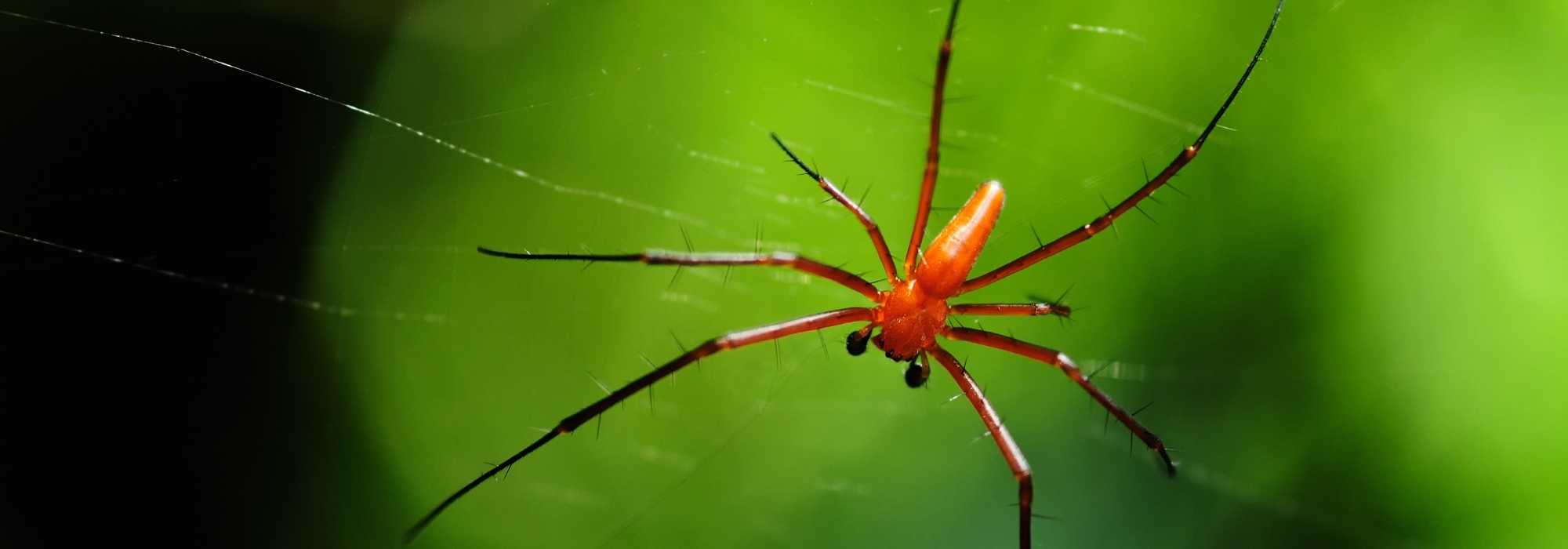
Red spider mite
Armoured scale insects
Symptoms
Shoots wither. In some cases, development of sooty mould, a fungal disease caused by black moulds, may be observed. Scale insects are difficult to spot as they are small and almost immobile (as adults) but they can still give cause for suspicion when one notices a heavy traffic of ants on the tree and, above all, sticky droplets of honeydew on the twigs.
Causes
Armoured scale insects suck sap and secrete a kind of honeydew (which can encourage sooty mould). They are insects belonging to the suborder Sternorrhyncha and the superfamily Coccoidea. Armoured scale insects appear as circular “shields” white with yellow centres or as small brown shells, both firmly attached to the needles and twigs of Thuja.
Treatment
Opt for a mixture of one teaspoon of black soap, one teaspoon of vegetable oil and one teaspoon of 70% alcohol. Pour everything into one litre of water and spray onto affected Thuja.
Other thuja problems
Besides pests and diseases, thujas also suffer from poor growing conditions or climate-related issues:
- Chlorosis in poor and very calcareous soil ;
- Sunburn of upper shoots during heatwaves ;
- Water stress linked to drought or to excessive evapotranspiration ;
- Freezing of shoots at temperatures below -18 °C for Thuja orientalis in particular ;
- Urban pollution in certain less-resistant varieties ;
- Asphyxiation of roots in soils that are too wet and too compact.
Let's avoid diseases and pest attacks on our arborvitae.
Best growing conditions
Above all, make sure your trees are grown in the best conditions. A plant under stress or nutrient-deficient will be more vulnerable to attacks or diseases. In addition, it will produce stress-induced plant hormones that attract pest insects. Thuja are hardy but dislike heavy, constantly wet soils. So provide a well-drained, humus-bearing soil. If, however, the soil is too free-draining, consider applying water at the base of your trees during dry periods.
→ For more on cultivating thuja, read Thuja: planting, pruning and care
Avoid pruning them with non-sterilised equipment and at unsuitable times. Best times to prune thuja are April–May and August, and if possible avoid rainy weather.
Avoid single-species thuja hedges
Monocultures of any kind are never a good idea. If first plant is affected, entire hedge will eventually be impacted. Better to favour diverse hedges with a few deciduous bushes, especially native species beneficial to wildlife.
→ Visit our site and discover our selection of the most attractive thuja to add to your garden.
Also, let’s not forget thuja is a tree! And sometimes a rather large one: up to 30 m tall. It will be much more at ease as a specimen or within a mixed border for more compact species and varieties. In short, avoid using it for hedges and give it a better place in your garden!
- Subscribe!
- Contents
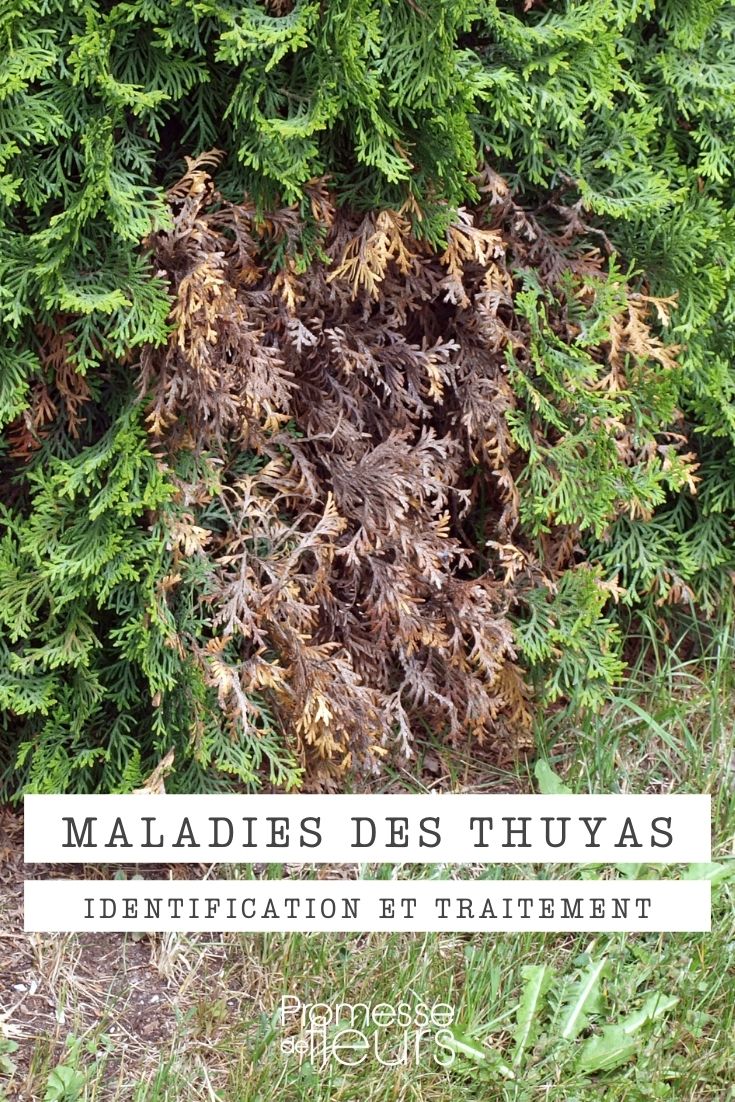































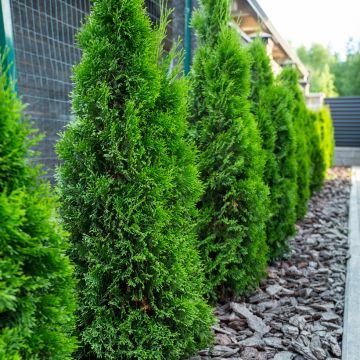
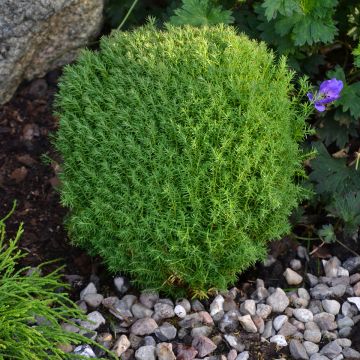
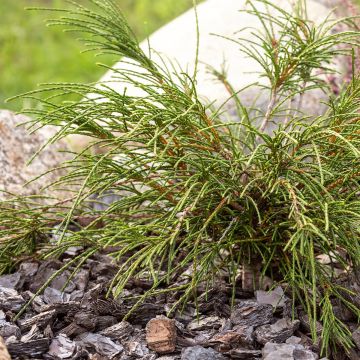
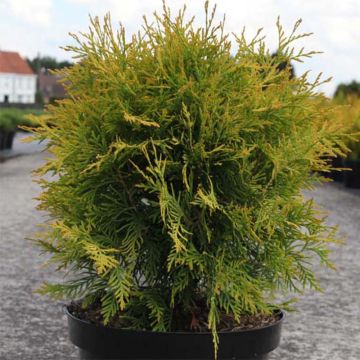

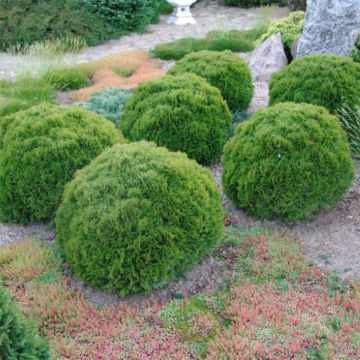
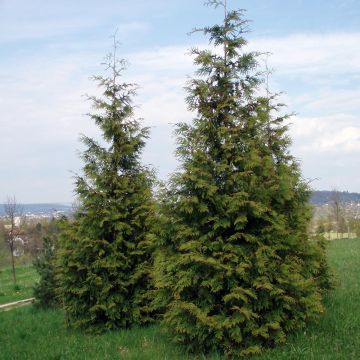
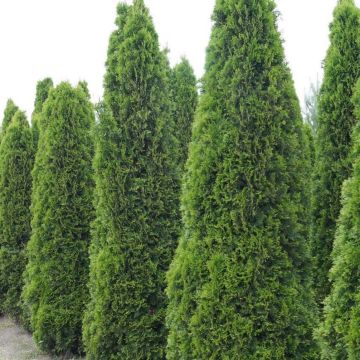

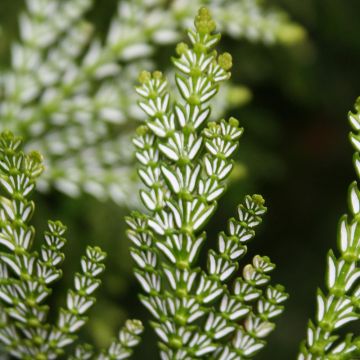
Comments